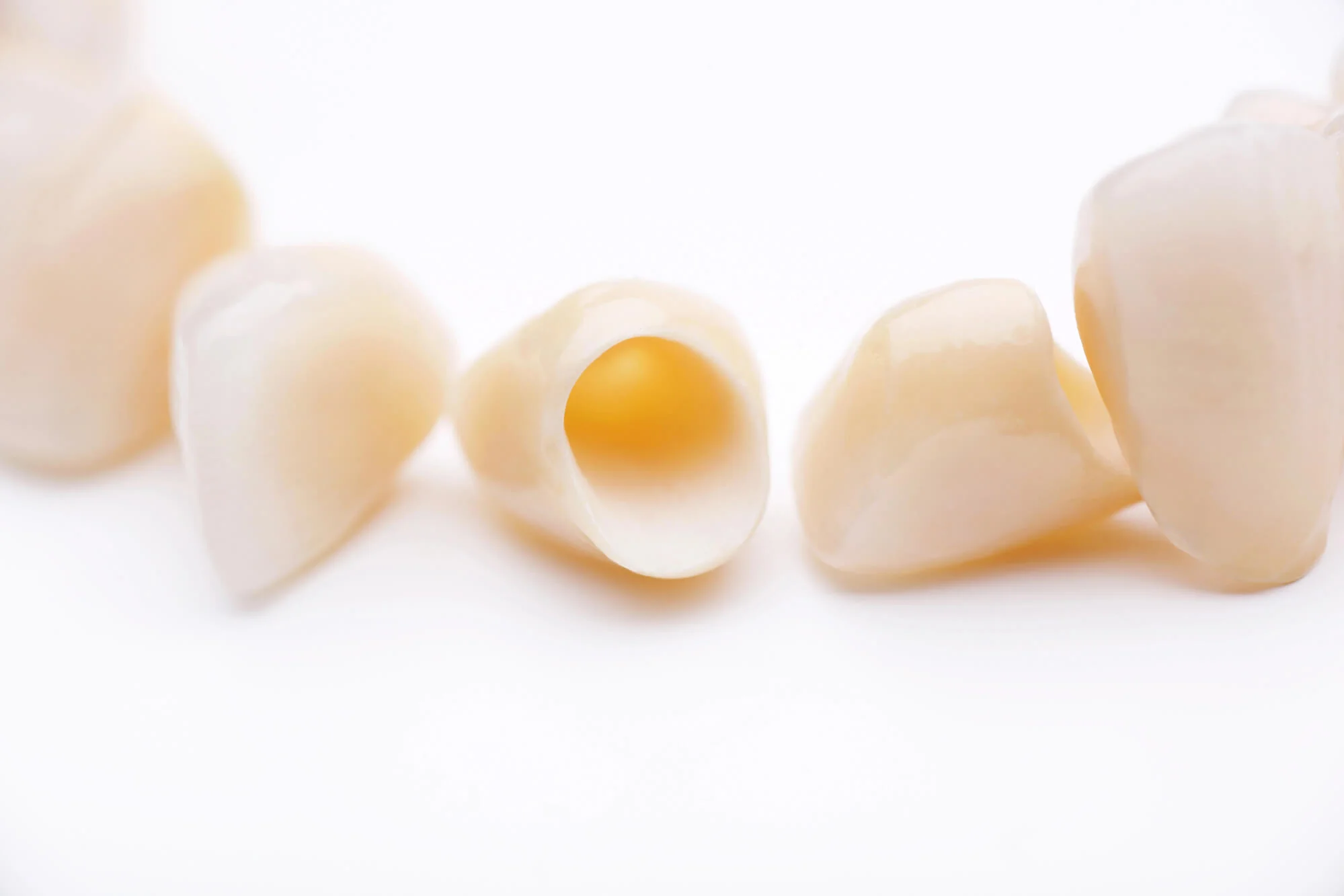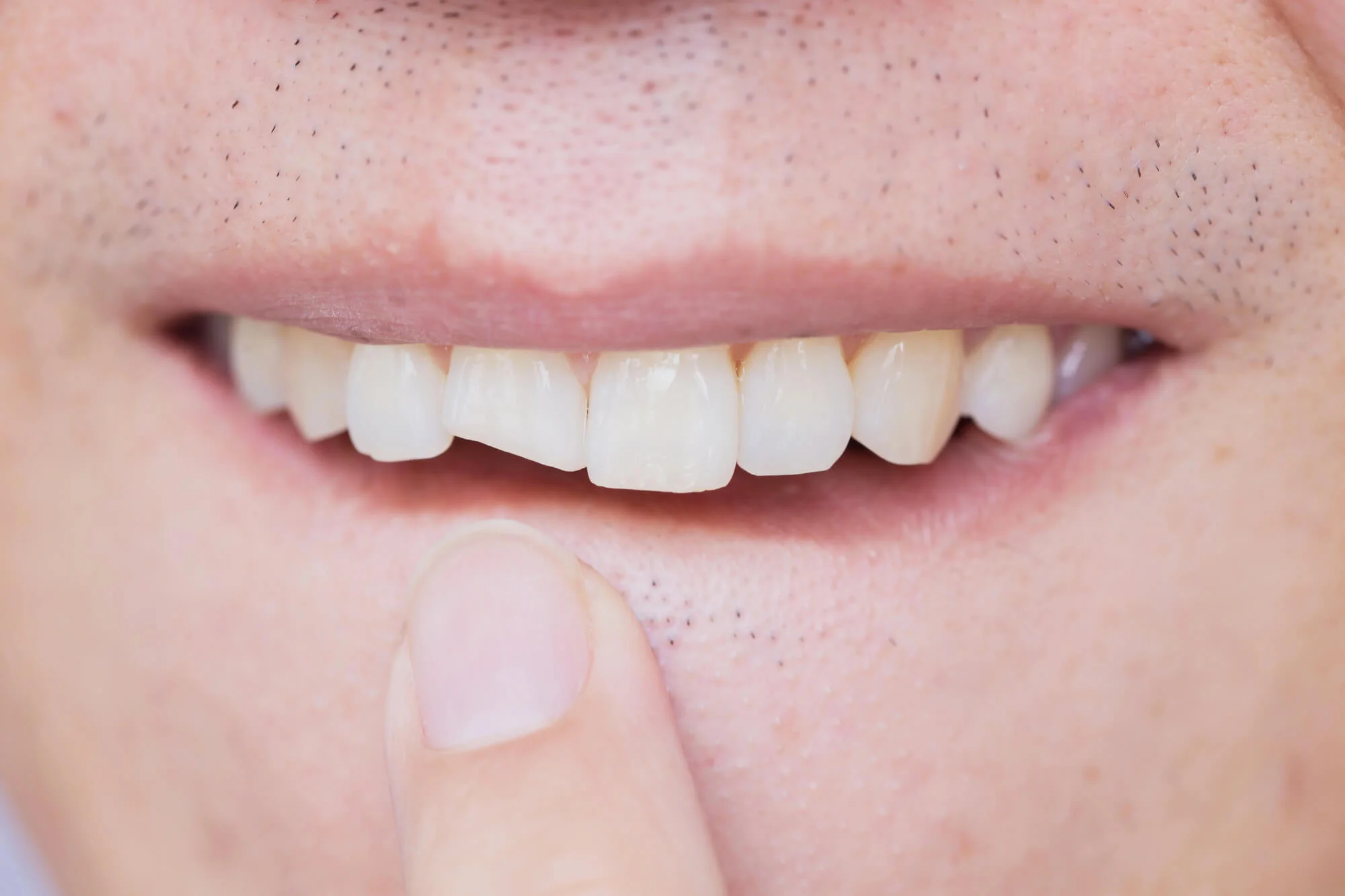
If you’ve been searching for dental crowns near you, chances are you’re wondering whether a simple filling is enough to fix your tooth or if a crown would be better. Fillings work well for small cavities and minor damage, but sometimes teeth need more strength and protection. Porcelain crowns step in when a filling won’t do the job, offering both durability and a natural look.

Understanding the Difference Between Fillings and Crowns
When a Filling Works Best
Fillings are ideal for treating cavities that haven’t caused too much damage. The dentist removes the decay, then restores the space with composite or amalgam material. A filling is quick, effective, and preserves most of your natural tooth structure.
Why a Crown Is Sometimes Necessary
Crowns, often made from porcelain, cover the entire tooth. They’re used when the tooth is weak, cracked, or has lost significant structure. Instead of patching up one spot, a crown protects the tooth and restores its full function.
7 Signs You Might Need a Porcelain Crown Instead of a Filling
1. Your Tooth Is Severely Cracked or Broken
A minor chip is one thing, but a tooth's structure is compromised once it develops a deep crack. Cracks can extend into the enamel and dentin, leaving the tooth unstable. These fractures often spread under pressure, and no filling material can fuse the pieces back together.
A porcelain crown works like a protective cap, holding the tooth in one piece and preventing the crack from widening. Acting early with a crown can help avoid an extraction.
2. You’ve Had Multiple Fillings in the Same Tooth
When a tooth gets a new filling, some of its natural surface is removed. Over time, this process can hollow out the tooth and reduce its ability to withstand normal biting forces. Repeated fillings also create seams where bacteria can sneak in and cause further decay.
At a certain point, adding another filling is like patching a wall that’s already crumbling. A crown replaces the compromised surface entirely, offering stability that small restorations can’t.
3. Your Tooth Is Weakened After a Root Canal
After root canal therapy, the tooth is saved but left more brittle. Without its pulp, the tooth no longer receives the same blood supply and can’t repair itself naturally. The result is a structure that’s more likely to crack under stress.
A crown placed after a root canal acts as armor, sealing the tooth and protecting it from everyday wear. It ensures the investment in your root canal lasts for many years.
4. You Have a Large Cavity That Compromises the Tooth
When decay eats away too much of a tooth, fillings become unreliable. Large cavities leave thin walls of enamel that can break off unexpectedly. If the cavity covers over half the tooth, filling material can’t provide enough reinforcement.
A porcelain crown solves this by enclosing the tooth completely, preventing decay from returning to the same weakened area and restoring the bite to full function.
5. You Notice Pain When Chewing
Lingering pain when you bite down often signals structural problems inside the tooth. Tiny cracks or weak enamel may flex under pressure, irritating the sensitive inner layers.
A crown locks the tooth in a stable shape, spreading pressure evenly. This prevents the flexing that causes discomfort and allows you to chew comfortably again. Painful chewing often progresses to fractures that are harder to repair if ignored.
6. You’re Unhappy With the Appearance of a Tooth
Cosmetic concerns are just as important as functional ones. Teeth that are stained, oddly shaped, or uneven can make you self-conscious. Unlike whitening or bonding, which only change the surface, a porcelain crown reshapes the entire tooth.
It can close gaps, smooth out irregular edges, and give you a uniform, natural-looking smile. For patients seeking strength and esthetics, crowns are often the ideal solution.
7. Your Tooth Structure Is Worn Down
Years of grinding, clenching, or acid erosion slowly wear away enamel. This leaves teeth shorter, flatter, and sometimes sensitive to temperature changes. Because enamel cannot regrow, the tooth needs external reinforcement.
A porcelain crown restores the tooth’s lost height and shape, protecting it and improving the fit of the bite. For patients with bruxism, crowns paired with a nightguard can make a dramatic difference in comfort and long-term oral health.
Benefits of Choosing a Porcelain Crown
1. Natural Appearance
Porcelain crowns are crafted to look just like real teeth. Each crown can be color-matched to your surrounding teeth to blend in seamlessly. For front teeth, especially, porcelain offers a natural translucency that makes the restoration nearly indistinguishable from your enamel.
2. Strength and Durability
Porcelain crowns are known for their long-lasting performance. Good oral hygiene and routine dental visits can last 10–15 years or longer. They’re built to withstand daily chewing and biting, helping you enjoy your favorite foods without hesitation.
3. Protects Against Further Damage
Once a tooth is cracked or weakened, it’s at risk for future injury. A crown covers the entire tooth, holding it together and sealing it off from bacteria that could lead to decay or infection. This protective layer preserves the tooth for years to come.
4. Improved Function
Chewing with a damaged tooth can be uncomfortable and even painful. A porcelain crown restores the tooth’s shape and size, restoring normal function. That means eating without worry and speaking with confidence.
5. Confidence in Your Smile
Beyond restoring health, crowns improve how you feel about your appearance. Many patients love the boost of self-esteem they get when they can smile without noticing chips, cracks, or discoloration.
6. Comfortable Fit
Modern crowns are designed with precision technology. They’re custom-fitted to your bite, which means fewer adjustments and a comfortable feel from day one.
7. Long-Term Value
While crowns are more of an investment than fillings, they often save money over time by preventing the need for repeated repairs. Protecting your natural tooth with a crown can reduce the chances of extraction or more complex procedures in the future.
FAQs About Crowns vs. Fillings
How Do I Know If I Need a Crown Instead of a Filling?
Your dentist will evaluate the size of the cavity, how much natural tooth structure remains, and whether your bite puts extra stress on that tooth. If a filling would leave the tooth vulnerable, a crown is often the best choice.
Is Getting a Crown Painful?
The procedure is performed under local anesthesia. You’ll stay comfortable during treatment, and most patients only report mild sensitivity afterward, which fades quickly.
How Long Does the Process Take?
Porcelain crowns typically require two visits: one to prepare the tooth and take impressions, and another to place the crown. In some offices, advanced digital technology makes same-day crowns possible.
Do Porcelain Crowns Stain?
Porcelain is highly resistant to staining, which means crowns usually maintain their bright appearance even if you enjoy coffee, tea, or red wine. Regular brushing and professional cleanings keep them looking their best.

Are You Considering Dental Crowns Near You?
When you’re thinking about dental crowns, it helps to have a dental team that combines expertise with a caring approach. At O’Shea Family Dental, we guide patients through every step, from evaluation to final placement, so you always know you’re making the best decision for your smile.
If you suspect you might need a crown or simply want more information, request an appointment today. Our friendly team is here to help you restore, protect, and love your smile again

.svg)










.svg)
.svg)
%201.svg)